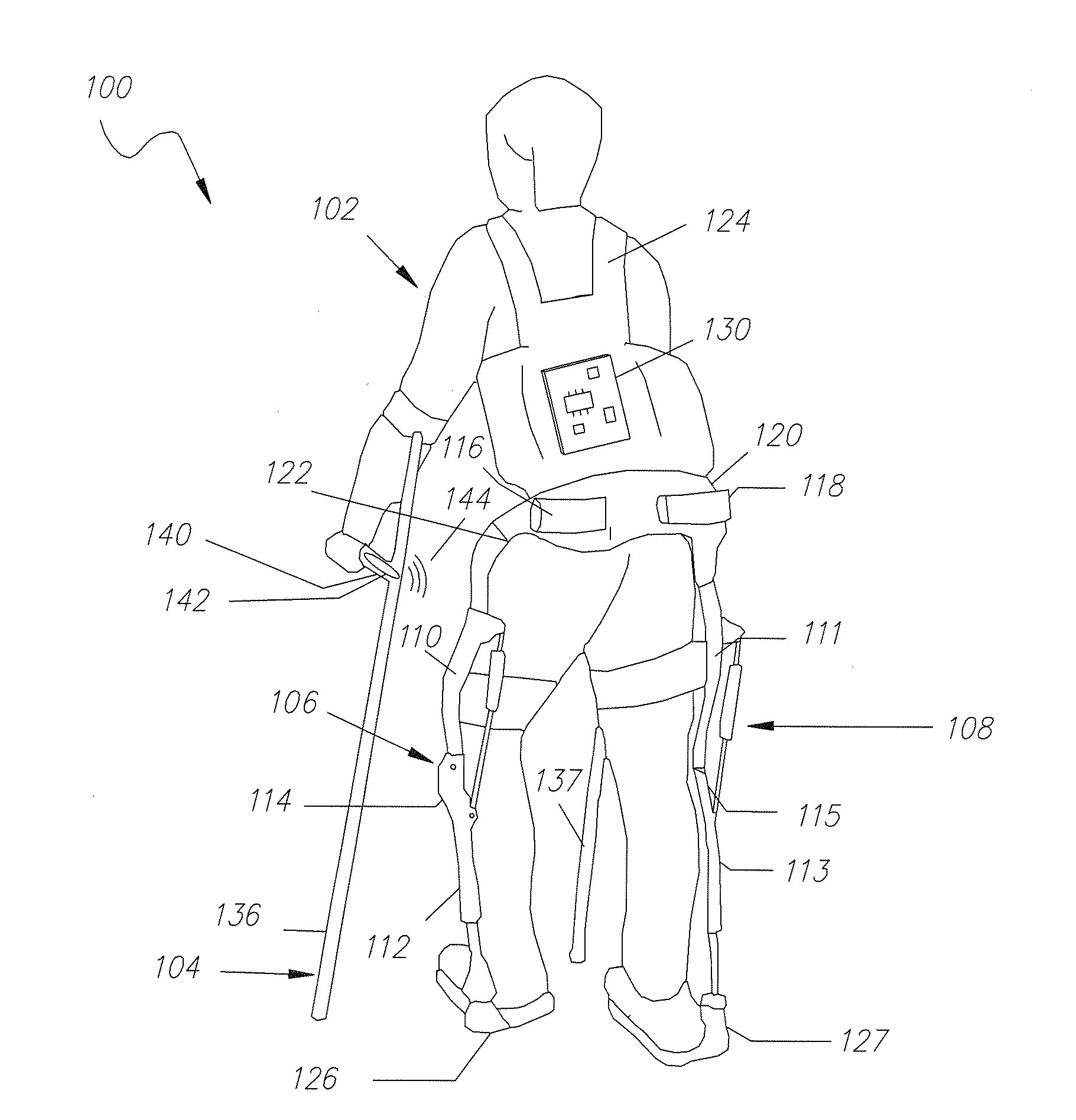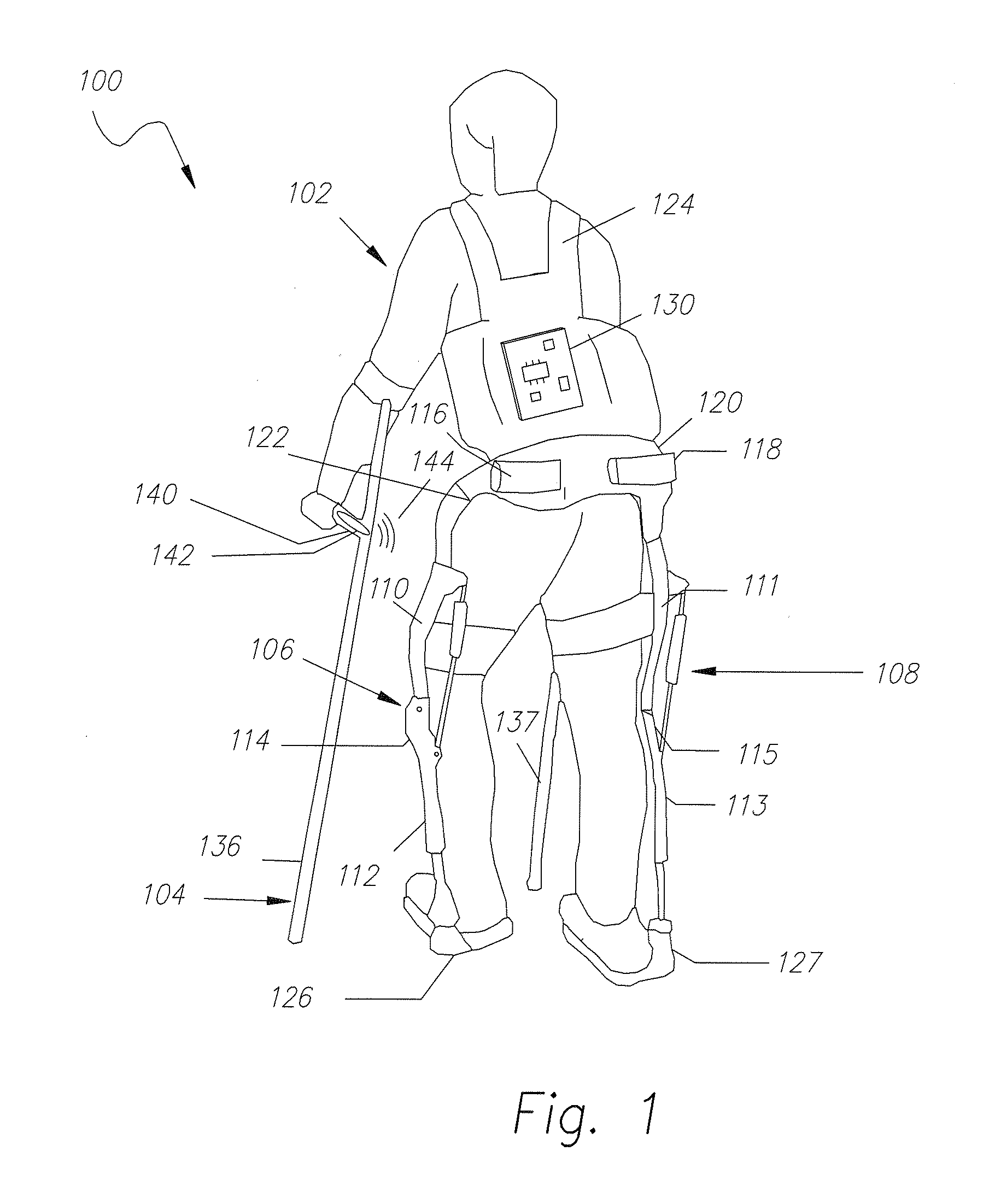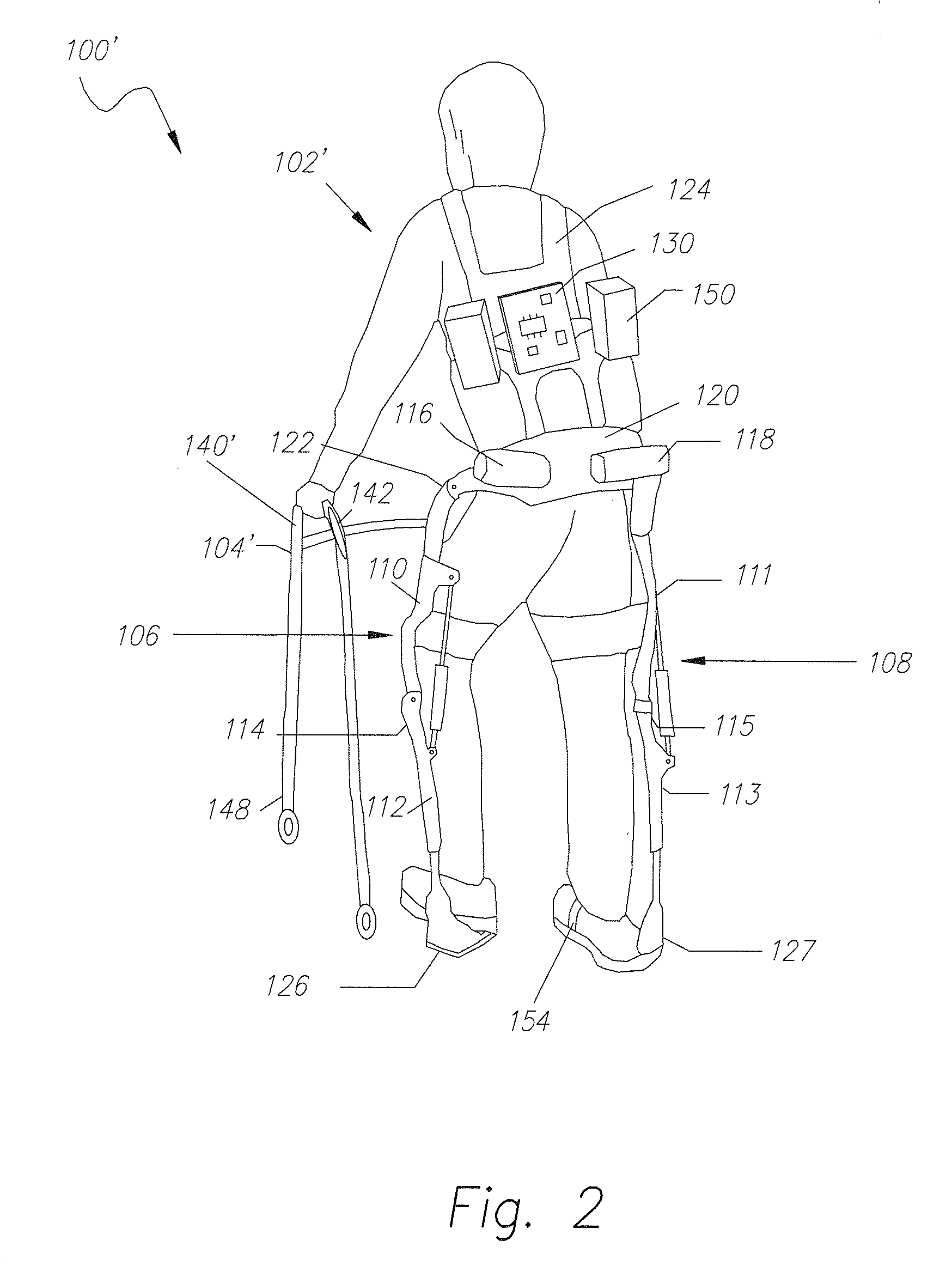Orthesis system and methods for control of exoskeletons
a technology of exoskeleton and orthesis, applied in the field of orthopaedic systems, can solve the problems of reducing heart and circulatory function, ramifications of long-term wheelchair use, and costing approximately $750 for one patient's treatmen
- Summary
- Abstract
- Description
- Claims
- Application Information
AI Technical Summary
Benefits of technology
Problems solved by technology
Method used
Image
Examples
first embodiment
[0054]an orthesis system of the present invention is generally indicated at 100 in FIG. 1. In general, orthesis system 100 includes a powered exoskeleton 102 configured to be coupled to a person, and a separate support device 104 to provide the person with additional stabilization. By “separate” it is meant that exoskeleton 102 and support device 104 are not integrally or permanently connected, such that any number of different types of support devices 104 could be paired with any number of different types of exoskeleton devices, depending on the needs and limitations of a particular user. It should be understood that various different types of powered exoskeletons could be adapted for use with the present invention. Such exoskeletons are powered and allow the wearers to walk upright without any substantial energetic drain. Various mechanical architectures for the exoskeleton systems may have different degrees of freedom and actuations. In some embodiments, the exoskeletons are powe...
second embodiment
[0057]FIG. 2 depicts orthosis system 100′, including an exoskeleton device 102′ similar to the one depicted in FIG. 1, and a support device 104′ in the form of a walker 148. Exoskeleton 102′ further includes a portable power supply 150 and foot attachments shown at 154 for further coupling a user's feet to exoskeleton 102′. Similar to crutches 136, 137, walker 148 includes opposing handles indicated at 140′, each including a signal generator 142 for generating and sending a user command signal 144 to exoskeleton controller 130.
[0058]Turning to FIG. 3 of the application, a user control 160 of signal generator 142 is shown in the form of a thumbwheel 162. In the embodiment shown, thumbwheel 162 is integrated into handle 140 of crutch 136. In an alternative embodiment depicted in FIG. 4, thumbwheel 162 is incorporated into handle 140′ of a walker 148. Regardless of the type of support device 104, thumbwheel 162 is utilized by a user to command exoskeleton 102 to shift the exoskeleton b...
PUM
 Login to View More
Login to View More Abstract
Description
Claims
Application Information
 Login to View More
Login to View More - R&D
- Intellectual Property
- Life Sciences
- Materials
- Tech Scout
- Unparalleled Data Quality
- Higher Quality Content
- 60% Fewer Hallucinations
Browse by: Latest US Patents, China's latest patents, Technical Efficacy Thesaurus, Application Domain, Technology Topic, Popular Technical Reports.
© 2025 PatSnap. All rights reserved.Legal|Privacy policy|Modern Slavery Act Transparency Statement|Sitemap|About US| Contact US: help@patsnap.com



